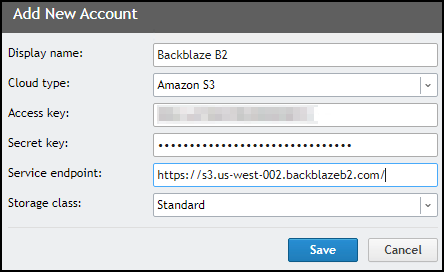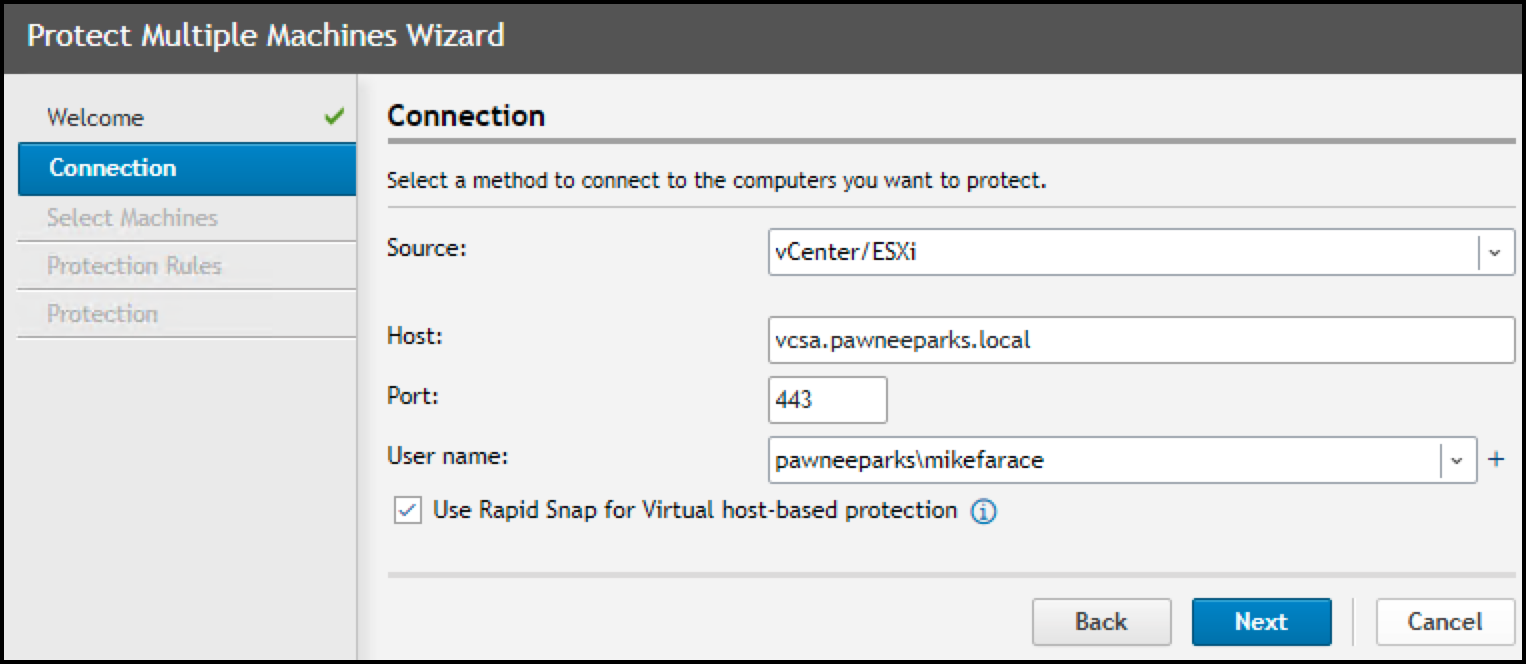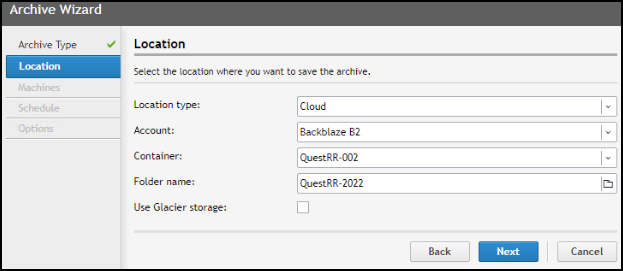Quest Rapid Recovery Integration with Backblaze B2
- Print
- DarkLight
Quest Rapid Recovery Integration with Backblaze B2
- Print
- DarkLight
Article summary
Did you find this summary helpful?
Thank you for your feedback
Quest Rapid Recovery lets you back up and quickly recover anything, whether it is physical, virtual, or in the cloud. This data recovery software allows you to run without restore, with zero impact on your users, as if the outage or data loss never happened. You can configure Quest Rapid Recovery with Backblaze B2 Cloud Storage.
Note:
The minimum version of Quest Rapid Recovery for Backblaze B2 is 6.7. Support for version 6.6 is provided with a patch that is available only from Quest Support.
Enable Backblaze B2
Before you begin: You must have a Backblaze B2 Cloud Storage account. If you already have a Backblaze account and the left navigation menu contains a B2 Cloud Storage section, your account is already enabled for Backblaze B2.
- Sign in to the Backblaze web console.
- In the user menu in the upper-right corner of the page, select My Settings.
- Under Enabled Products, select the checkbox to enable B2 Cloud Storage.
- Review the Terms and Conditions, and click OK to accept them.
Create a Bucket
- Sign in to the Backblaze web console.
- In the left navigation menu under B2 Cloud Storage, click Buckets.
- Click Create a Bucket.
- Enter a name for your bucket. Bucket names must be at least six characters and globally unique.
A message is displayed if your bucket name is already in use. - Select a privacy setting: Private or Public.NoteYou can change a bucket's privacy settings at any time.
Files that are in a private bucket require authentication to perform an action, for example, downloading.
Public buckets do not require authentication so you can easily access files. If this is your first time creating a public bucket, complete the following tasks to ensure that you have the correct permissions to create a public bucket:
1. Verify your email address.
2. Have a payment history on file, or use the credit card form to pay a small fee that is credited to your account balance. - If applicable, enable a Backblaze B2 server-side encryption key.
- Enable Object Lock to restrict a file from being modified or deleted for a specified period of time.
- Click Create a Bucket, and copy the value that is in the Endpoint field; you may need this value later.
- Click Lifecycle Settings to control how long to keep the files in your new bucket.
Note
Copy the S3 endpoint that is displayed for use in another step.
Create an Application Key
- Sign in to the Backblaze web console.
- In the left navigation menu under B2 Cloud Storage, click Application Keys.
- Click Add a New Application Key, and enter an app key name.
You cannot search an app key by this name; therefore, app key names are not required to be globally unique. Key names are limited to 100 characters and can contain letters, numbers, and "-", but not I18N characters, such as é, à, and ü. - Select All or select a specific bucket in the Allow Access to Bucket(s) menu.
- Optionally, select your access type (Read and Write, Read Only, or Write Only).
- Optionally, select Allow List All Bucket Names.
This option is required for the B2 Native API b2_list_buckets and the S3-Compatible API S3 List Buckets operations. - Optionally, enter a file name prefix to restrict application key access only to files with that prefix.
Depending on what you selected in step #4, this limits application key access to files with the specified prefix for all buckets or just the selected bucket. - Optionally, enter a positive integer to limit the time, in seconds, before the application key expires.
The value must be less than 1000 days (in seconds). - Click Create New Key, and note the resulting keyID and applicationKey values.
Note
When you create a new app key, the response contains the actual key string, for example N2Zug0evLcHDlh_L0Z0AJhiGGdY. You can always find the keyID on this page, but for security, the applicationKey appears only once. Make sure you copy and securely save this value elsewhere.
Configure a New Cloud Account

- In the Quest Rapid Recovery main menu, click
 and select Cloud Accounts.
and select Cloud Accounts. - Click Add New Account, and enter a display name (for example, Backblaze B2).
- Select Amazon S3 as the cloud type.
- Enter your Backblaze B2 keyID as the Access key.
- Enter your Backblaze B2 applicationKey as the Secret key.
- Enter the service endpoint URL that you copied when you created your bucket.
- Select Standard as the storage class.
- Click Save.
Create a Virtual Machine (VM) Backup Job
This example shows how to attach a vCenter server by entering the hostname and the account credentials.

- In the Quest Rapid Recovery main menu, click Protect and click Protect Multiple Machines.
- In the Connection tab, connect to the computers that you want to protect.
- Select vCenter/ESXi.
- Enter a host address.
- Enter 443 as the port.
- Select Use Rapid Snap for Virtual host-based protection.
- Click Next.
- In the Select Machines tab, select the VMs that you want to back up and click Next.
- In the Protection Rules tab, select the validation rules that you want to automatically apply and click Next.
- In the Protection tab, select your protection settings and click Next.
- In the ABM Settings tab, select exclusion options (for example, the swap file or subdirectories to exclude, such as temporary folders).
- Click Finish.
Create an Archive Location

- In the Quest Rapid Recovery main menu, click Archive and click Create Archive.
- In the Location tab, select the location to save the archive.
- Select Cloud as the location type.
- Select Backblaze B2 as the account.
- In the Container field, select the name of the bucket that should contain the backup archive.
- Enter a name for the folder that will contain the backup archive.
- Click Next.
- In the Machines tab, select the protected machines that you want to store in the archive and click Next.
- In the Schedule tab, select the backup archive schedule options and click Next.
- In the Options tab, select the recycle action for the archive (for example, Incremental).
- Click Finish.
Was this article helpful?
